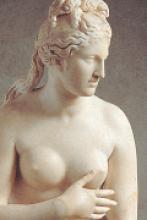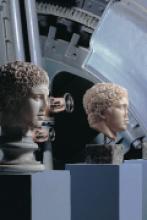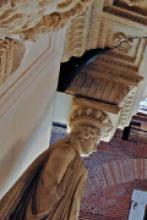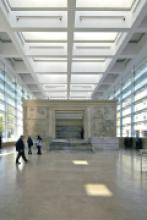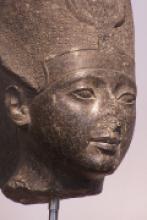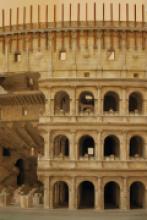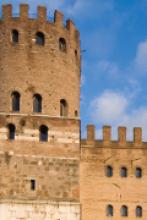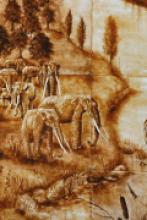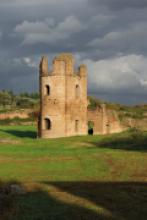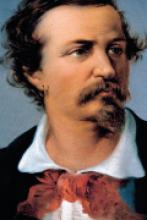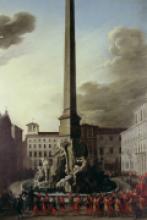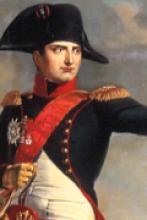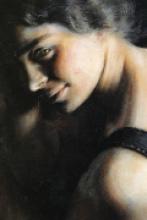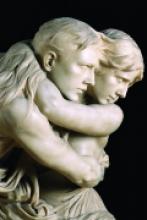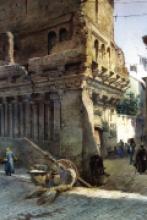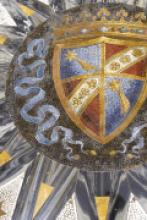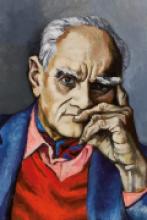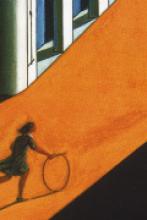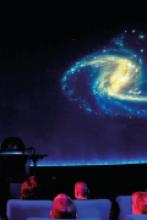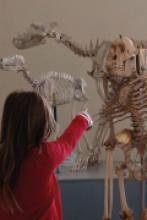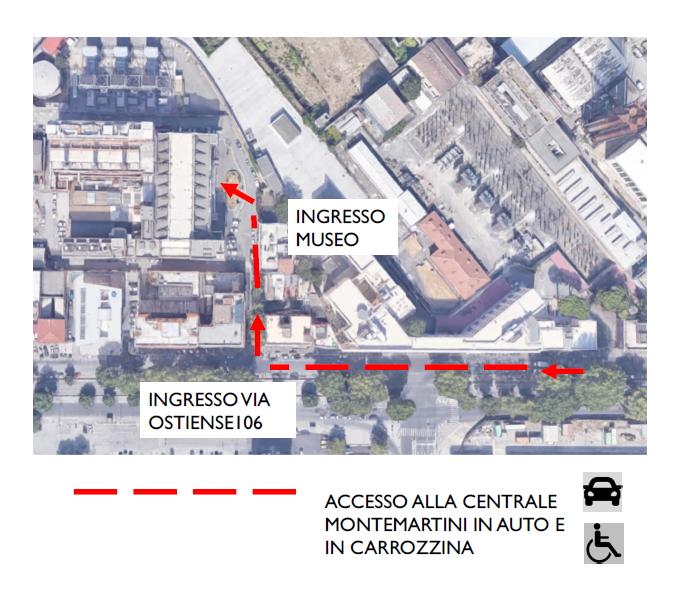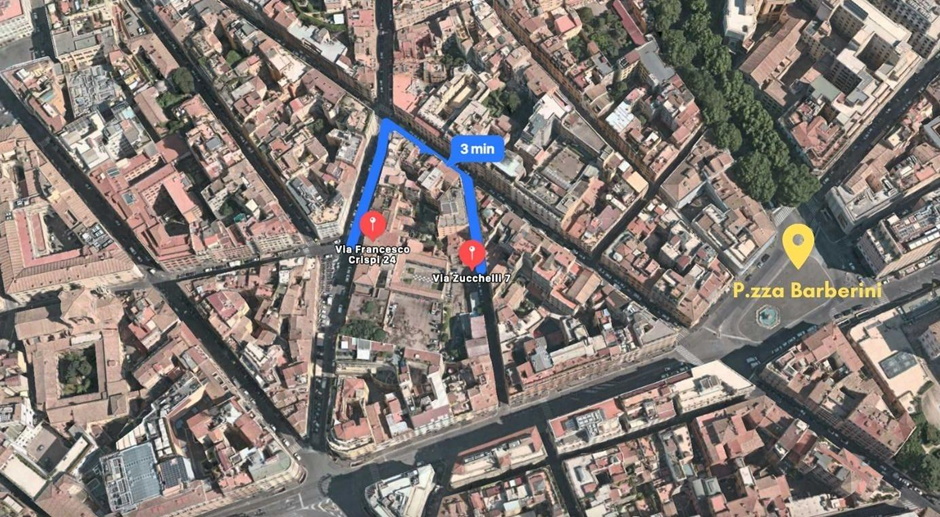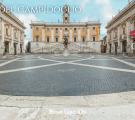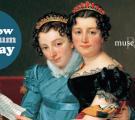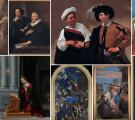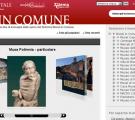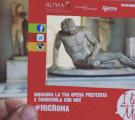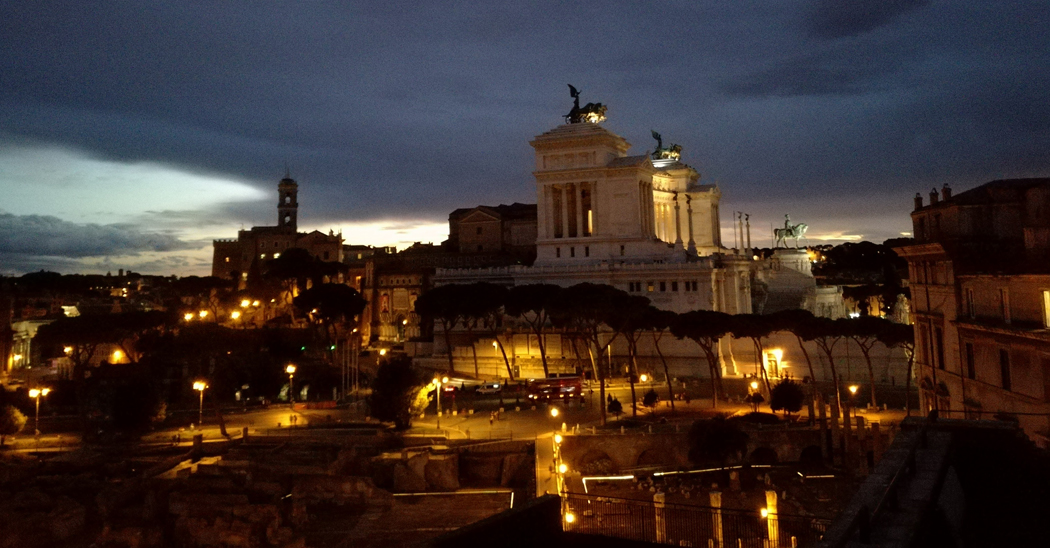Accessibility
The Sovrintendenza Capitolina ai Beni Culturali aims to ensure access to historical and artistic heritage by the widest possible audience.
Most of the Rome’s Civic Museums are accessible to everyone.
Though the historic feature of the buildings prevents, in some cases, the total removal of architectural barriers, many museums, however, have been fitted with elevators, stairlifts, and services suitable for visitors with motor disabilities.
Our museums offer a wide range of tools and programs specifically designed for adults and young people with disabilities.
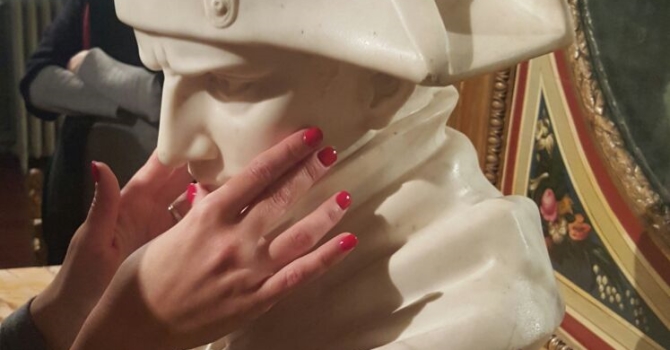
Our museums offer a wide range of tools and programs specifically designed for adults and young people with disabilities.
Accessibilita
Sovrintendenza Capitolina ai Beni Culturali aims to guarantee access to its historical and artistic heritage to the widest possible audience.
Most of the Municipality Museums are accessible to everyone.
Although the historical character of the buildings prevents, in some cases, the total removal of the architectural barriers, many museums have installed elevators, stairlifts and services suitable for visitors with impaired mobility.
Our museums offer a wide range of tools and programs specifically designed for adults and children with disabilities.
The entrance to the Museums for disabled people and one family member or other companion is free.
To learn about the appointments of the dedicated educational activities, consult the Accesible projects
Accessibility for visitors with mobility disabilities

The supports (lifts, stairlifts and platforms), as well as the museum staff present, help to visit the collections in the Musei Capitolini.
> Read more
Routes for blind and visually impaired visitors

The Musei Capitolini are equipped with permanent tactile supports that allow blind and visually impaired people to explore and learn about some of the most important artworks displayed in the Museums. These supports are available thanks to the attention that has been paid to this public over the years.
> Read more
Accessibility for deaf visitors
LIS (Italian Signs Language)
For many years, the Musei Capitolini have made available online a LIS (Italian Signs Language) video that describes the entire route.
Inside the Museums, in the multifunctional area of the Temple of Jupiter, you can consult the touch-screen terminal which contains a LIS video about the history of the Capitol
The integrated LIS video guide to the Pinacoteca Capitolina is also online.
> Read more
The Sovrintendenza Capitolina ai Beni Culturali works to provide the access to its historical and artistic heritage for the widest possible public.
Our museums offer a large range of facilities and special programs for adults and children with disabilities.
Entrance to the Museum for the disabled and a family member or other caregiver is free of charge.
Accessibility for visitors with mobility disabilities

MUSEUM ENTRANCE MAP
[click the map to enlarge]
How to reach Centrale Montemartini
Access by private car or taxi:
The entrance to the museum is located in via Ostiense 106. Visitors with reduced mobility may enter by car or by taxi into the internal courtyard at the Centrale Montemartini. To request to open the gate, it is necessary to use the intercom located to the left of the gate, or call 0667105431.
Wheelchair access:
Wheelchair access is also possible on via Ostiense 106. To request to open the gate, please use the intercom on the left of the gate or call 0667105431.
Visiting the Centrale Montemartini
MUSEUM ACCESS MAPS (GROUND FLOOR AND FIRST FLOOR)
[click the map to enlarge]
The exhibition rooms of the museum are all accessible.
Once you have visited the Sala Colonne and the Sala del treno di Pio IX on the ground floor, it is possible to go up to the Sala Macchine, using lift no.1 (maximum capacity 900 kg).
To reach the Sala Caldaie it is necessary to use lift no.2 (maximum capacity 840 kg), returning to the ground floor.
The museum provides a wheelchair for people with reduced mobility and/or who are older.
Routes for blind and visually impaired visitors

In accordance with the state of the epidemiological situation, the museum offers regular touch visits for those visitors with impaired vision or blindness. Visits are guided by specialised staff.
See the section Accessible Projects for information.
During the visits by specialised staff, the museum offers a book for touch-exploration reproducing the mosaic of the Ratto di Proserpina. The book was produced by the Museo statale Tattile Omero di Ancona, in partnership with Zètema Progetto Cultura.
In the Sala Colonne of the Centrale Montemartini there is a touch support made in acrylic material reproducing a part of the mosaic of the Real Casa, with Braille legends in Italian and English.
Listen to the story in italian
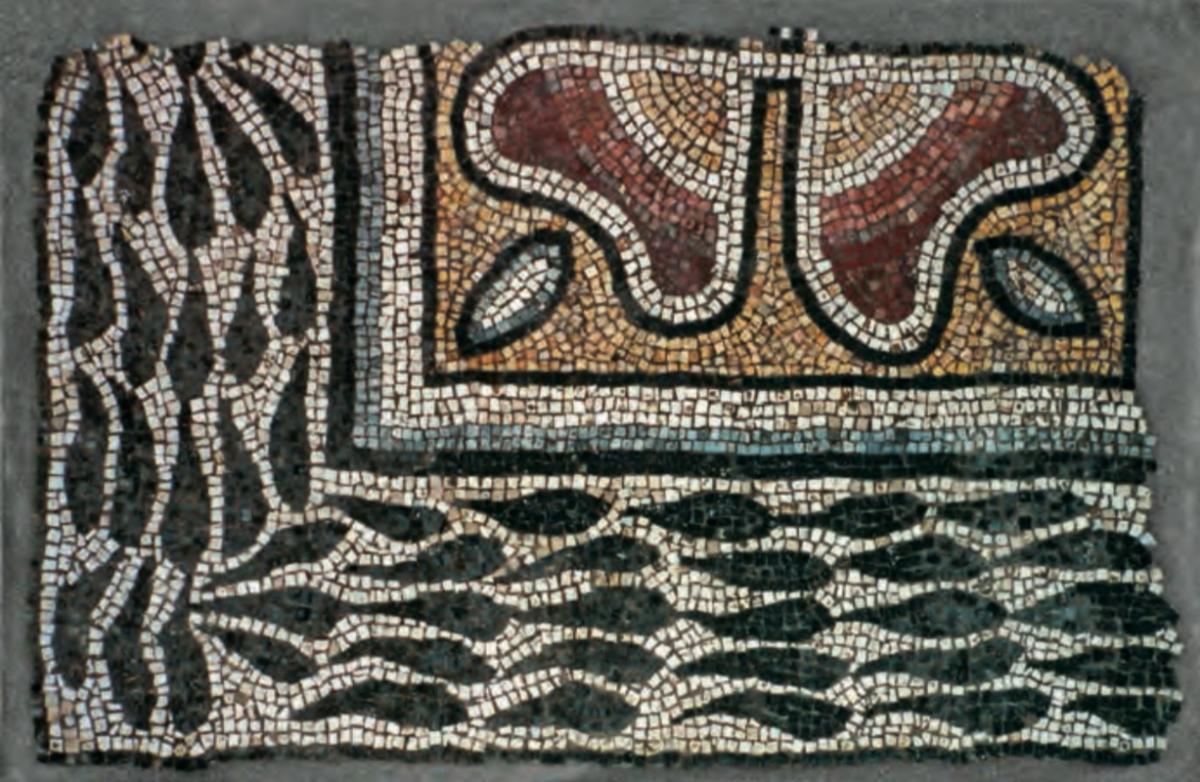
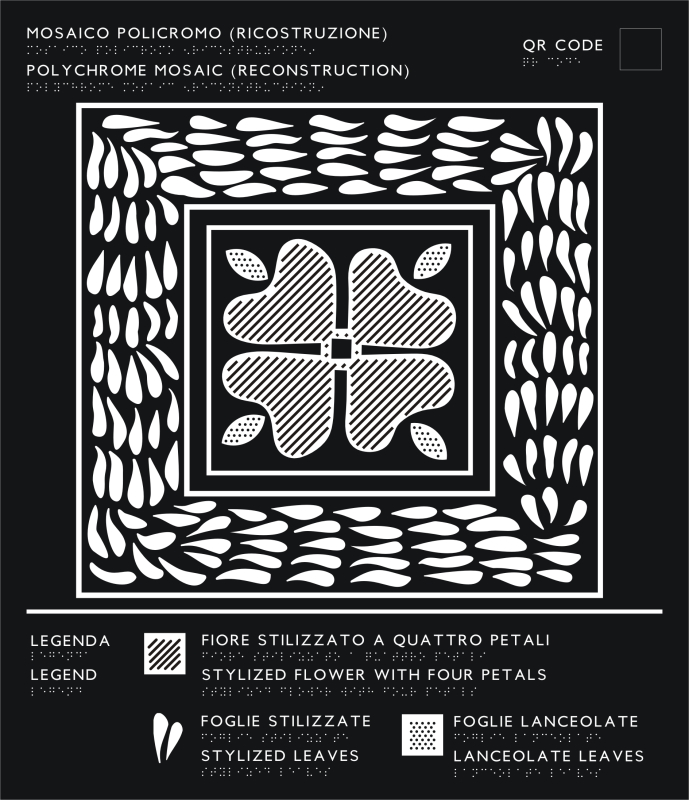
Italian description of the Real Casa
Accessibility for deaf visitors
LIS (italian signs language)
At the entrance/ticket desk of the Centrale Montemartini there is a sign language video explaining the history of the place, from its first function as a power station to its transformation into a museum.
Guided tours in LIS (Italian Signs Language) can be booked by email at didattica@zetema.it
The whole monumental complex of the Mercati di Traiano was adapted for access by the disabled.
The museum provides a wheelchair for people with reduced mobility.
To learn about the appointments of the dedicated educational activities, consult the Special Projects
LIS (italian signs language)
Videoguide in LIS with Italian subtitles
At the entrance of the Museum there is a display showing a LIS video.
LIS Video of the Fori Imperiali
The name "Fori Imperiali" refers specifically the five monumental complexes commissioned by the emperor, built in accordance with the Roman Forum of the Regio-Republican period and replacing it in religious, political and administrative terms.
The Museo of Ara Pacis is accesible
The Sovrintendenza Capitolina ai Beni Culturali wants to provide the widest possible public access to its historical and artistic heritage.
The Ara Pacis Augustae Museum, built ex novo in 2006, has a number of structural features that make it easier to access and offers various tools and special events for adults and children with disabilities. The museum is constantly being updated in order to improve the experience of all visitors.
Admission to the Museum is free for people with disabilities and their companion
> For dedicated educational events, see Accessible Projects
Accessibility for visitors with mobility disabilities

The enjoyment of the cultural heritage housed in the Ara Pacis Museum is facilitated by a series of aids (access ramps and lifts) and by the reception and assistance services provided by the museum staff.
> Read more
Routes for blind and visually impaired visitors

The Ara Pacis Museum is equipped with permanent tactile aids that allow blind and visually impaired visitors to explore and learn about the monument. Dedicated aids and tours are also provided during temporary exhibitions. The availability of these services is the result of the attention that has been paid over the years to the needs of visually impaired visitors.
> Read more
Accessibility for deaf visitors
LIS (Italian Signs Language)
Inside the Museum, near the entrance, there is a LIS video station that tells the story of the monument and the building that contains it.
> Read more
VISITORS WITH MOBILITY DISABILITIES
Access
Access is authorised only on the ground floor, where a multimedia station offer a virtual tour in the museum. Entrance from Vicolo dell'Aquila (ring the bell).
The Casa Romana is not accessible
BLIND AND VISUALLY IMPAIRED VISITORS
Braille code guide
A Braille guide in Italian and English is available by request.
Audioguides
Can be hired from the ticket counter.
Guided tour
The blind public can discover the museum through a plan in Braille.
There are also legends in Braille along the museum route.
Li-Fi project
Guided visually disabled or visually impaired people can use all the li-fi stations, both on the ground floor, where there are two steps, and in the basement and on the upper floor, although they have to negotiate flights of stairs downhill (for the basement) and uphill for the first floor points. Enjoyment is ensured through the use of audio tracks created from the textual content.
To learn about the appointments of the dedicated educational activities, consult the Accesible Projects
LIS (italian signs language)
Barracco Museum LIS video
The important collection of ancient sculptures donated by Giovanni Barracco in 1904 to the City, considered one of the most interesting museum collections in Rome, is now available to the general public thanks to the recent restoration and reopening of the Museum.
The museum is accessible through the special ramps at the sides of the entrances;
The museum display is on one floor only;
A free wheelchair facility is available for all visitors with walking difficulties.
Il Museo non è accessibile.
Su prenotazione è possibile fornire didattica dedicata (visite guidate tattili-sensoriali e in LIS)
Per conoscere gli appuntamenti della didattica dedicata, consultare i Progetti accessibili
LIS
Video LIS del Museo delle Mura
Il Museo delle Mura ha sede nella porta San Sebastiano, una delle più grandi e meglio conservate delle Mura Aureliane. Il percorso museale ripercorre la storia delle fortificazioni della Città: quelle di età regia e repubblicana e quelle di Aureliano (III sec. d.C.).
Persons with mobility difficulties
Access
The archaeological area, visible from a footbridge from where it is possible to observe the deposit from the top, is accessible by a ramp.
The exhibition hall and services are on the level. The museum is equipped with disabled toilets.
The 'Giardino Pleistocenico' is accessible via a walkway for everyone.
Visually impaired persons
The visit to the deposit is accompanied by an audio/video which can replace an audio guide due to its descriptive and narrative character.
In the exhibition room it is possible to manipulate some objects, such as copies of chipped flints similar to those in the showcases.
As of 20 February 2024, the Pleistocene Garden will be enriched with a permanent multi-sensory exhibition route, consisting of 15 panels with relief illustrations and captions translated into Braille, presenting the daily life of a group of Neanderthals reconstructed on illustrated relief boards. The exhibition pays special attention to inclusive dissemination and is also aimed at people with physical, sensory and cognitive disabilities.
Full details at > A special journey... From the river to the sea
People with hearing disabilities
The entire tour is also translated into Italian Sign Language (LIS).
Il museo è accessibile ai disabili
Su prenotazione è possibile fornire didattica dedicata (visite guidate tattili-sensoriali e in LIS)
Per conoscere gli appuntamenti della didattica dedicata, consultare i Progetti accessibili
LIS
Video LIS di Villa di Massenzio
Il complesso massenziano, una delle aree archeologiche più suggestive della campagna romana, si estende tra il II ed il III miglio della via Appia Antica ed è costituito da tre edifici principali: il palazzo, il circo ed un mausoleo dinastico, progettati in una inscindibile unità architettonica per celebrare l’imperatore Massenzio, lo sfortunato avversario di Costantino il Grande nella battaglia di Ponte Milvio del 312 d.C..
Il museo è accessibile. All’interno del museo è disponibile una carrozzina per chi ha difficolta di deambulazione.
VIDEO LIS Museo della Repubblica Romana e della Memoria Garibaldina
The Museo di Roma provides access to its historical and art collection for the largest number of visitors.
Access for visitors with reduced mobility and disabilities
The Museo di Roma is completely accessible, with a stair lift (maximum weight supported by the platform is 300 kg) on the courtyard level that allows access to the lift leading to the three floors. A wheelchair is available inside the museum for visitors with walking difficulties.
Admission to the Museum for the disabled and their family members or other assistants is free of charge.
To find out about the dedicated educational events, consult the Accessible Projects [link to Accessible Projects | Museo di Roma ].
Routes for blind and visually impaired visitors
I WILL TELL YOU ABOUT A MUSEUM
Podcast of the Sovrintendenza Capitolina ai Beni Culturali.
I'll tell you about a museum: Museo di Roma Ep. 1
I'll tell you about a museum: Museo di Roma Ep. 2
The Museo di Roma is equipped with permanent touch supports that allow blind and visually impaired visitors to get to know and, in the case of sculptures, explore by touch some of the most important artworks on display:
SECOND FLOOR
Room 1
Pierre Hubert Subleyras, San Camillo de Lellis salva gli ammalati dell'Ospedale Santo Spirito durante l'inondazione del 1598, 1746, painting, oil on canvas, 205x284 cm, MR 5701
Room 2
Filippo Gagliardi, Filippo Lauri, Carosello a Palazzo Barberini in onore di Cristina di Svezia, 1656, a painting with oil on canvas, 231x340 cm, MR 5698
Room 11
Giuseppe Ceracchi, Busto di Pio VI Braschi, c. 1790, marble, 91x71 cm, MR 45699
Room 12
Cristopher Hewetson, Ritratto del principe Luigi Gonzaga di Castiglione, in Arcadia Emireto Alantino, 1776, marble, 65x40 cm, Dep Arc 172
Cristopher Hewetson, Ritratto di Maria Maddalena Morelli Fernandez, in Arcadia Corilla Olimpica, 1776, marble, 65x40 cm, Dep Arc 173
Room 14
Pietro Tenerani, Ritratto di Vittoria Caldoni, 1821, marble, 47x27 cm, MR 43071
Room 15
Pietro Tenerani, Psiche svenuta, 1822, plaster, cm 113x102, MR 43327
THIRD FLOOR
Room 16
Roman workshop, Bassorilievo con scudo araldico della famiglia Buccabella, 14th century first half, cm 68x103x8,8, marble, MR 44455
Room 17
Ambito toscano, Madonna col Bambino e quercia araldica di Giulio II della Rovere (property table), first half 16th century, cm 56x55, marble, MR 41759
Room 18
Enrico Maccari, Facciata del Casino del Bufalo, 1885, frame incision, GS 4508 (Tactile restitution table)
In this room, containing the large frescoes by Polidoro da Caravaggio and Maturino da Firenze (1525) for the Casino Del Bufalo, demolished in 1885 for the opening of Via del Tritone, a special educational experience is available on demand, allowing different audiences (sighted and blind) a moment of sharing.
At the end, if requested, visitors can also take a touching tour of the reconstruction of the front of the Casino Del Bufalo, made by the Museo Statale Tattile Omero of Ancona. In this case, it is usually the blind person who 'guides' the sighted person, as they are more expert in the perceptive experience of touch.
Room 19
Ambito romano, Fusto di colonna con iscrizione che indica il limite di una inondazione del Tevere sotto il pontificato di Alessandro III, 1180, cm 112x20, marble, MR 41373
> View the map on the page How to visit the Museum
Accessibility for deaf and hard of hearing visitors
LIS
LIS video of the Museum of Rome in the monumental courtyard.
Per accedere al museo è necessario salire alcuni gradini. Un montascale destinato alle persone con difficoltà di deambulazione è presente in Via Giuseppe Zanardelli 1, a pochi metri dalla biglietteria del museo. Nelle giornate di sabato e domenica l’attivazione del montascale può essere richiesta alla biglietteria telefonando al numero 06 6874240.
LIS
Video Lis del Museo Napoleonico
Consulta i contenuti digitali del museo accessibili a persone con disabilità.
Il museo non è accessibile
The access into the museum is from Via Zucchelli 7 arriving from Via Sistina, with advanced booking at the Gallery's telephone numbers: 06 4742848, 064742904, 06 4742909.
Access for the Visitors with reduced mobility
Through the gate in Via Zucchelli, visitors must follow a road going uphill and cross a wide courtyard, now used as the parking area for Ama's service vehicles. The area is open at the cars with a badge for the disabled, and two reserved parking spaces are available at the entrance door to the museum, where there is an interphone: an assistant will receive the visitors.

[click the map for zoom]
Public transport
By underground: Metro A, Barberini stop.
From metro station A Barberini: take the exit on via Vittorio Veneto, and then via dei Cappuccini, turn right on via Sistina and then left on via Zucchelli. The gate is on the right, at number 7.
By bus: 52, 53, 62, 83, 85, 100, 160, 492, Tritone/Barberini stop; proceed west on Via del Tritone, turn right and take Via Zucchelli: the destination is on the right, at number 7.
A visit inside the Gallery of Modern Art
The historical feature of the buildings means that in some places the architectural structures cannot be completely removed, but the museums operate in order to provide access to their historical and artistic heritage for the widest possible public.
Visits to the Galleria d’Arte Moderna are supported by a series of aids (lifts, stair lifts and platforms) and by the the assistance of the staff. A wheelchair is available inside the museum for those who have difficulty walking, which can be requested at the ticket office or from the caretaker.
Once inside the museum, visitors find themselves in the Sculpture Cloister; opposite is the lift, which takes them up the three floors.
From the ground floor, where the sculptures of the permanent collection can be admired, there is also access to the cloister-garden outside, where temporary exhibitions and events are held.
The museum and exhibition route includes the small cloister on the first floor, where a cloakroom service is available.
On the first floor, the access to the first and second rooms is provided by four steps and a mobile platform (150 kg capacity). The passage between the second and third rooms is 86 cm wide.
The access to the Sala Ovale (entrance width 90 cm) there are four steps that can be overcome with a treadmill (capacity 150 kg).
Access to the library is via a metal ramp with side railings.
In front of the lift, there is also a refreshment area with vending machines (door width 85 cm).
The second floor is fully accessible.
On the third floor, the passage between the second and third rooms is 86 cm wide.
Due to the architectural features of the building, the "Graphics room" and the respective corridor are not accessible.
On the third floor there is a bathroom for people with disabilities.
The museum custodians are always available to assist any visitor who wishes to do so, subject to the precautions due to the current health situation.
Routes for blind and low-vision visitors

The museum custodians are always available to assist any visitor who wishes to do so, subject to the precautions due to the current health situation.
For information see the special section of the website: www.galleriaartemodernaroma.it/en/didattica/progetti_speciali
Accessibility for deaf visitors
LIS (italian signs language)
Video LIS
The museum occasionally offers guided tours with the help of an interpreter in LIS.
For information see the dedicated section of the website: www.galleriaartemodernaroma.it/en/didattica/progetti_speciali
Sovrintendenza Capitolina ai Beni Culturali aims to guarantee access to its historical and artistic heritage to the widest possible audience.
Most of the Municipality Museums are accessible to everyone.
Although the historical character of the buildings prevents, in some cases, the total removal of the architectural barriers, many museums have installed elevators, stairlifts and services suitable for visitors with impaired mobility.
Our museums offer a wide range of tools and programs specifically designed for adults and children with disabilities.
To learn about the appointments of the dedicated educational activities, consult the Accesible projects
Accessibility for visitors with mobility disabilities
How to reach the museum
The museum is located in viale Fiorello La Guardia n. 6, inside Villa Borghese.
Access to Villa Borghese by car:
- arrive in Viale Fiorello La Guardia n. 10/14 where it is possible to park the car in a gravel area, after a few meters a ramp allows access to the sidewalk that leads to the entrance of the museum in Viale Fiorello La Guardia n. 6
Access to Villa Borghese by cab:
- arrive directly in front of the entrance of the museum in Viale Fiorello La Guardia n. 6
The visit
The museum is accessible entirely to people with disabilities.
The entrance to the museum is on the street level; a wheelchair is also available inside for those who have difficulty walking. In order to move from one floor to another, a platform stairway (maximum capacity 250 kg) is used, either independently or with the assistance of a guide.
Routes for blind and visually impaired visitors
The C. Bilotti Museum is equipped with permanent tactile supports that allow blind and visually impaired visitors to explore and learn about some of the most important works on display.
On the occasion of the exhibition "Arte e Natura. Opere dalle collezioni capitoline di arte contemporanea", which ended in October 2021, some contents have been created to deepen the knowledge of some of the works on display that we invite you to listen to the dedicated page
Accessibility for deaf visitors
LIS (Italian Signs Language)
There is a totem with a video in sign language-LIS.
LIS video Museo Carlo Bilotti
Sovrintendenza Capitolina ai Beni Culturali aims to guarantee access to its historical and artistic heritage to the widest possible audience.
Most of the Municipality Museums are accessible to everyone.
Although the historical character of the buildings prevents, in some cases, the total removal of the architectural barriers, many museums have installed elevators, stairlifts and services suitable for visitors with impaired mobility.
Our museums offer a wide range of tools and programs specifically designed for adults and children with disabilities.
To learn about the appointments of the dedicated educational activities, consult the Accesible projects
Accessibility for visitors with mobility disabilities
The Museo Pietro Canonica is a House Museum. In addition to the exhibition rooms, therefore, the private flat and the artist's studio are also part of the tour. The Museum is located in a seventeenth-century building in the Villa Borghese and consequently there are some architectural barriers that are currently difficult to remove. However, a number of aids (stair lifts and platforms), together with the availability of the custodial staff, make it possible to visit the ground floor, with all the exhibition rooms and a large part of the private flat: the reception hall, known as the Fireplace Room due to the presence of a magnificent 16th century fireplace, and the suggestive artist's studio, with the intimate atmosphere of a place of inspiration and creativity.
Thee museum does have adequate toilets and it does have a bathroom on the ground floor that is large enough to accommodate a wheelchair.
A wheelchair is available inside the museum on request for those who have difficulty walking.
The Pietro Canonica Museum also houses the Villa Borghese Sculpture Depot, located on the basement floor, and consisting of an open space, the lower garden of the Museum, and an exhibition room where works from the Borghese Collection, originally located to decorate the park, are kept. It is accessible from outside the museum via a slightly downhill gravel driveway. Once past the entrance gate, you enter the garden and, after a short cobblestone walkway, a convenient ramp leads to the interior of the exhibition space.
How to reach the Pietro Canonica Museum
Access to the museum by car with a badge:
- access to the museum is permitted from Piazzale delle Canestre and Viale Pietro Canonica as far as the museum where you can park (driveway in front of the museum or along the side avenue).
Access to the museum by taxi:
- access to the museum from Piazzale delle Canestre and Viale Pietro Canonica.
Access to the museum in a wheelchair:
- from Piazzale delle Canestre and Viale Pietro Canonica (slightly downhill and then uphill on the driveway);
- from Piazzale Pablo Picasso and Viale di Valle Giulia (uphill on the driveway);
- from Via Pinciana and Viale dei Cavalli Marini (flat route on the driveway).
Routes for blind and visually impaired visitors
The Pietro Canonica Museum provides the blind and visually impaired public with a small publication in Braille language describing La Fortezzuola, the seventeenth-century historic building that houses the Museum. Since 2016, routes and descriptive cards have been created to support and prepare for guided tactile tours. It is possible to discover the works and routes that are the subject of tactile visits periodically organised at the museum by specialised staff.
Accessibility for deaf visitors
LIS (Italian Signs Language)
The Pietro Canonica Museum has produced two LIS videos describing the museum and the Villa Borghese sculpture deposit, both installed at the museum entrance and also available online.
LIS video Museo Pietro Canonica
LIS video Villa Borghese sculpture deposit
The Museum is accessible from Piazza Sant'Egidio, 1. Please contact 06 5897123.
The Museum is provided with a wheelchair for people who have mobility disabilities.
To learn about the appointments of the dedicated educational activities, consult the Accesible projects
LIS (italian signs language)
LIS video of the Museo di Roma in Trastevere
Thanks to the great number and variety of the Museo di Roma's collections, it was possible to create a new museum institution in 1977 in the newly restored Carmelite convent of Sant'Egidio, identifying at that time a specific area of interest in its name, the Museum of Folklore and Roman poets.
The Sovrintendenza Capitolina ai Beni Culturali has the mission to provide a wide public access to its historical and cultural heritage.
A large number of the Museum System of Roma Capitale is open and accessible to all visitors.
In some cases the historical structure of the buildings cannot be completely eliminated, but many museums have been provided with lifts, stair lifts and services for visitors with reduced mobility.
The museums provide a wide range of facilities and programmes for adults and young people with disabilities.
The entrance at the Museums is free of charge for disabled people and one of their family members or other person who accompanies them and demonstrates that they are members and employees working in social and health services. The ticket offices are located at the Casino Nobile and the Serra Moresca.
For information about dedicated workshops please consult our Online Accessible Projects.
Audio and video contents linked to the Villa Torlonia Museums are available online on the Digital Museum page.
Access for visitors with reduced mobility
The Access at the cultural heritage inside Villa Torlonia Museums is possible by using a range of different devices (lifts, elevators and ramps) and by the assistance of the staff in charge of the museum.
Access for blind and visually impaired visitors
The Villa Torlonia Park is provided by a special guided touch map located at the main entrance in Via Nomentana n.70, designed to help visitors who are visually handicapped or have low vision to visit the Villa and its Museums.
It is possible to explore and learn about some of the most important works exhibited in the Villa Torlonia Museums through guided touch tours.
Access for deaf visitors
LIS
The Villa Torlonia Museums have produced two videos in LIS (Italian sign language) explaining the Casino Nobile and the Casina delle Civette, that have been placed at the entrance to both museums and are also available online.
VILLA TORLONIA PARK
In Villa Torlonia is now available the first touch sensitive map for the Historical Villas, as a new inclusive resource for the Access to the Museums by Touch projects. Located inside the Villa's park, near the main entrance in Via Nomentana 70, the touch map (design "for all") provides a simple and clear way to find your route in the wonderful garden area of the most beautiful noble Roman villa, for people with visual difficulties (blind, visually impaired and with colour perception problems) and for the normally sighted.
In addition, the desk's features guarantee the full use of this map also for people with motor disabilities (an empty space below the level of the inclination to host the wheelchair)..
VILLA TORLONIA THEATRE
The access at the entrance and to the information offices is by a stairway.
The first gallery can be reached by a standard size lift. Ask the staff for the activation of the lift.
The Planetarium is accessible from the entrance at Piazza Giovanni Agnelli 10.
Next to the entrance staircase, there is a pathway for visitors with motor disabilities.
